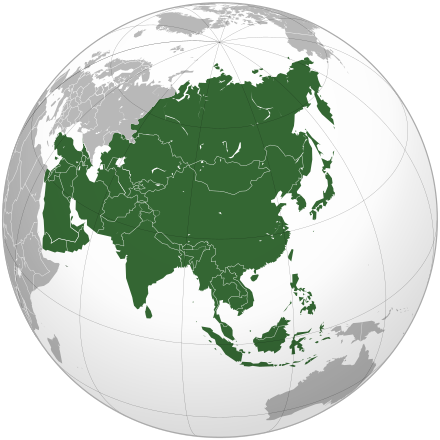
Height varies significantly across different regions of the world, and Asia is no exception. The average height in Asia is influenced by genetics, nutrition, lifestyle, and economic factors. While some countries have seen significant increases in height due to improved living conditions, others still have relatively shorter populations compared to Western countries.In this article, we will explore the average male height in Asia, the average female height in Asia, and how height trends have changed over time. We will also compare the average height in Asian populations with other continents and examine key factors that influence growth.
Table of Contents
ToggleAverage Height of Asian People
Average Height for Men in Asia
The average male height in Asia varies significantly across different countries. Generally, men in East Asia tend to be taller than those in South and Southeast Asia. Here are some of the average male heights recorded in various Asian countries:
- South Korea: 174 cm (5’8”)
- Japan: 172 cm (5’7.5”)
- China: 171 cm (5’7”)
- India: 166 cm (5’5.5”)
- Vietnam: 168 cm (5’6”)
- Indonesia: 165 cm (5’5”)
East Asian countries, particularly South Korea and Japan, have witnessed significant height increases in recent decades due to better nutrition and healthcare.
Average Height for Women in Asia
The average female height in Asia is generally lower than the global average. Like men, women in East Asia tend to be taller than those in South and Southeast Asia. Here are some statistics on female height in different countries:
- South Korea: 162 cm (5’4”)
- Japan: 159 cm (5’3”)
- China: 160 cm (5’3”)
- India: 153 cm (5’0”)
- Vietnam: 155 cm (5’1”)
- Indonesia: 152 cm (4’11.5”)
The difference between the average female height in Asia and other regions can be attributed to genetics, diet, and healthcare access.
Average Height Statistics in Asia
Regional Variations in Height Across Asia
The average height in Asia is not uniform, as each region has distinct genetic and environmental influences. The tallest populations are typically found in East Asia, while South and Southeast Asia have shorter average heights.
- East Asia: South Korea, Japan, and China have some of the tallest populations in Asia.
- South Asia: Countries like India, Bangladesh, and Pakistan generally have shorter average heights.
- Southeast Asia: Nations like Indonesia, the Philippines, and Thailand have relatively lower average heights compared to East Asia.
Economic development, healthcare access, and improved diets play a crucial role in height differences across these regions.
How Tall Are People in Asia?
On average, the height of people in Asia has been steadily increasing over the years. The average height in Asian populations has improved due to better living standards, but there is still a noticeable gap compared to Western countries.When compared globally, Asian populations are generally shorter than those in Europe and North America, though the gap is narrowing due to improvements in lifestyle and nutrition.
Average Height by Country in Asia
Understanding the average height in Asia provides useful insights into regional health, nutrition, and lifestyle differences. Across the continent, there are noticeable variations in stature between different countries. For example, the average height for men in Asia tends to range between 165 cm (5 ft 5 in) and 175 cm (5 ft 9 in), depending on the nation. Similarly, the average height for women in Asia is generally between 152 cm (5 ft 0 in) and 163 cm (5 ft 4 in).These differences are influenced by genetics, dietary habits, and overall living conditions. The table below highlights the updated average male and female heights across major Asian countries, offering a clear comparison for 2025.
Country | Average Male Height | Average Female Height |
China | 171 cm (5 ft 7 in) | 160 cm (5 ft 3 in) |
Japan | 172 cm (5 ft 8 in) | 159 cm (5 ft 3 in) |
India | 166 cm (5 ft 5 in) | 153 cm (5 ft 0 in) |
Thailand | 170 cm (5 ft 7 in) | 159 cm (5 ft 3 in) |
Indonesia | 165 cm (5 ft 5 in) | 152 cm (5 ft 0 in) |
Malaysia | 168 cm (5 ft 6 in) | 157 cm (5 ft 2 in) |
Vietnam | 168 cm (5 ft 6 in) | 155 cm (5 ft 1 in) |
South Korea | 174 cm (5 ft 9 in) | 162 cm (5 ft 4 in) |
Singapore | 172 cm (5 ft 8 in) | 160 cm (5 ft 3 in) |
Philippines | 167 cm (5 ft 6 in) | 154 cm (5 ft 1 in) |
Shortest Countries in Asia by Average Height
While some Asian nations are known for relatively tall populations, others have much shorter average heights due to genetics, nutrition, and lifestyle factors. The shortest countries in Asia by average height are generally found in Southeast Asia, where both men and women tend to have smaller body frames compared to East Asia.For example, the average height for men in Asia can reach 174 cm (5 ft 9 in) in countries like South Korea, but in nations such as Indonesia or the Philippines, men average closer to 165–167 cm (5 ft 5 in to 5 ft 6 in). Similarly, the average height for women in Asia may be around 160–162 cm (5 ft 3 in to 5 ft 4 in) in taller regions, but in countries like Vietnam or the Philippines, it is typically around 154–155 cm (5 ft 1 in).
Country | Average Male Height | Average Female Height |
Indonesia | 165 cm (5 ft 5 in) | 152 cm (5 ft 0 in) |
Philippines | 167 cm (5 ft 6 in) | 154 cm (5 ft 1 in) |
India | 166 cm (5 ft 5 in) | 153 cm (5 ft 0 in) |
Vietnam | 168 cm (5 ft 6 in) | 155 cm (5 ft 1 in) |
Malaysia | 168 cm (5 ft 6 in) | 157 cm (5 ft 2 in) |
Thailand | 170 cm (5 ft 7 in) | 159 cm (5 ft 3 in) |
Height Trends in Asia Over Time
Changes in Average Height Over the Decades
Over the past century, the average height in Asia has increased due to better nutrition, healthcare, and economic development. Some key height trends include:
- South Korea: One of the fastest-growing populations in terms of height, with an average increase of 8–10 cm in the last 50 years.
- China: Significant improvements in nutrition have led to noticeable height gains, particularly among younger generations.
- India: While the increase in height has been slower, urban populations are seeing more growth due to better diets and healthcare access.
Countries with rapid industrialization and economic growth have experienced the most significant height increases.
Differences Between Rural and Urban Populations
Rural populations in Asia tend to be shorter than urban populations due to differences in diet, access to healthcare, and overall living conditions. Key reasons include:
- Nutrition: Urban areas typically have better food variety and access to essential nutrients.
- Healthcare: Improved medical care in cities helps prevent childhood diseases that can stunt growth.
- Living Standards: Higher incomes and better living environments contribute to better overall health and development.
As more people move to cities, the average height in Asian populations is expected to continue rising.
Factors Influencing Average Heights in Asia
Genetics and Ethnicity
Genetics plays a crucial role in determining the average height in Asia. Some ethnic groups naturally have shorter statures, while others are predisposed to being taller. Key genetic factors include:
- East Asians tend to have a moderate height range due to their genetic makeup.
- South Asians generally have shorter statures due to evolutionary adaptations to warmer climates.
- Southeast Asians also tend to be shorter, but height is improving with better nutrition.
While genetics set the foundation for height, external factors like diet and healthcare can influence growth.
Nutrition and Diet’s Impact on Growth
Nutrition is one of the most critical factors affecting the average height in Asia. Diets rich in protein, calcium, and essential vitamins contribute to better growth. Key dietary influences include:
- High-protein diets (common in East Asia) support stronger bone development.
- Calcium-rich foods like dairy products help in bone growth.
- Vitamin D intake is essential for proper bone formation.
Countries with improved diets have seen noticeable increases in their average male height in Asia and average female height in Asia over time.
Height Comparison: Asia vs. Other Continents
Height Differences Between Asia, Europe, and the Americas
Compared to other continents, the average height in Asian populations is generally lower. Here’s how Asia compares:
- Europe: The tallest populations, with average male heights around 178 cm (5’10”).
- North America: Similar to Europe, with men averaging around 176 cm (5’9.5”).
- South America: Slightly shorter than North America, with men averaging 172 cm (5’7.5”).
Despite these differences, the gap between Asia and other continents is closing due to better healthcare and nutrition. The average height in Asia is expected to continue rising, particularly in urban areas where living conditions are improving.
FAQ
How many cm height can be increased with LON method surgery?
The LON method can let the patient lengthen beyond 8 cm as opposed to Precice 2 method for the femur. The patient can lengthen around 8 to 10 cm.
Is LON method surgery painful?
The surgical procedure itself generally doesn’t induce pain as the patient is under general anaesthesia. However, following the LON method surgery, there might be a mild discomfort until the effects of the anaesthesia subside. It’s crucial to note that pain thresholds vary among individuals. Our team will be available at the hospital to ensure that any discomfort is kept to minimum. The discomfort experienced during the lengthening process can be compared to muscles soreness. In the LON method, some patients complain about pain at the pin entry sites as well as skin pain.
Limb lengthening surgery may be considered for individuals with no existing health issues. The diseases are uncontrolled diabetes, cancer, bone disorders, skin diseases.
At what age can the LON method be performed?
There is no age limit for limb lengthening surgery as well as limb lengthening LON method surgery. The important thing that can stop you from having the surgery is if you have any health problems.
The procedure for lengthening limbs through surgery is a complex medical intervention that requires careful considerations. One crucial requirement for this procedure is that the patient has completed their growth phase to ensure that the surgery doesn’t interfere with natural growth. Typically, an experienced specialist, an endocrinologist, assessed this through various tests and analyses to determine the growth status.
Moreover, it’s vital that the patient doesn’t have any serious illnesses or health conditions that could increase the risk associated with the procedure. Thorough medical evaluations and assessments are necessary to ensure the patient’s suitability for this operation.
Usually, individuals undergoing limb lengthening surgery fall within the age range of 13 to 65 years. This broad span accommodates younger patients who may require corrections due to growth disorders or other medical reasons, as well as older patients seeking length adjustments for aesthetic or functional purposes.
Overall, limb lengthening surgery demands a comprehensive evaluation of individual’s health to ensure a safe and effective procedure. It’s essential that the surgery is performed by an experienced surgeon within a specialised medical setting to achieve optimal results and facilitate successful rehabilitation.
What is the doctor’s follow-up process after LON method surgery?
After the LON method surgery, the patient starts lengthening approximately 5-7 days later. Following this, physiotherapy sessions commence, accompanied by doctor visits every 2 weeks, and X-Rays taken every 10-15 days. These steps enable the doctor to measure the extent of the lengthening and provide an assessment. Once patients reach their targeted goal, the removal process takes place, initiating the subsequent recovery phase.

Op. Dr. Halil Buldu
Orthopedic Surgeon and specialist in Limb Lengthening & Deformity Correction with over 14 years of experiences
Author Page


